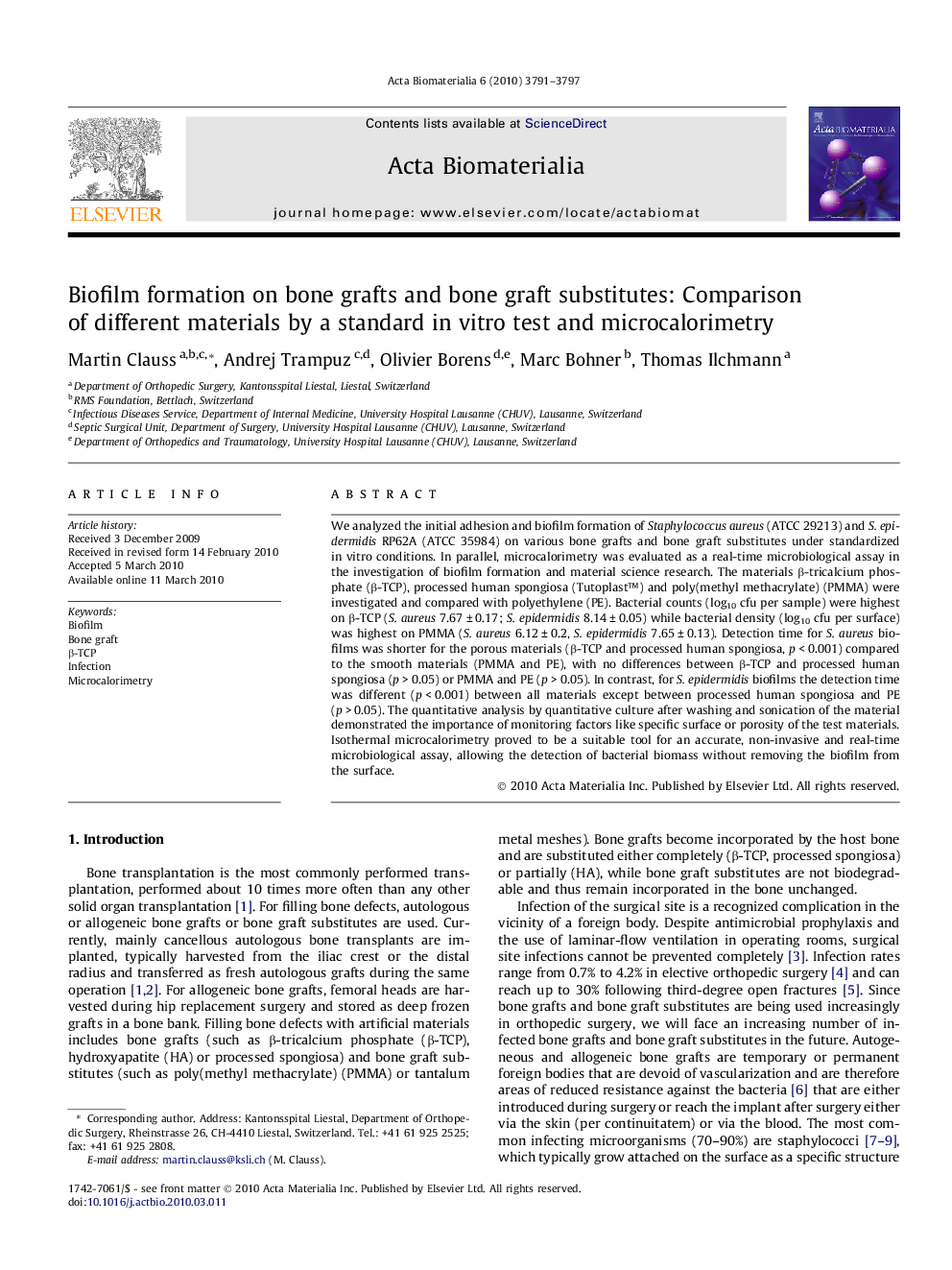| Article ID | Journal | Published Year | Pages | File Type |
|---|---|---|---|---|
| 2176 | Acta Biomaterialia | 2010 | 7 Pages |
We analyzed the initial adhesion and biofilm formation of Staphylococcus aureus (ATCC 29213) and S. epidermidis RP62A (ATCC 35984) on various bone grafts and bone graft substitutes under standardized in vitro conditions. In parallel, microcalorimetry was evaluated as a real-time microbiological assay in the investigation of biofilm formation and material science research. The materials β-tricalcium phosphate (β-TCP), processed human spongiosa (Tutoplast™) and poly(methyl methacrylate) (PMMA) were investigated and compared with polyethylene (PE). Bacterial counts (log10 cfu per sample) were highest on β-TCP (S. aureus 7.67 ± 0.17; S. epidermidis 8.14 ± 0.05) while bacterial density (log10 cfu per surface) was highest on PMMA (S. aureus 6.12 ± 0.2, S. epidermidis 7.65 ± 0.13). Detection time for S. aureus biofilms was shorter for the porous materials (β-TCP and processed human spongiosa, p < 0.001) compared to the smooth materials (PMMA and PE), with no differences between β-TCP and processed human spongiosa (p > 0.05) or PMMA and PE (p > 0.05). In contrast, for S. epidermidis biofilms the detection time was different (p < 0.001) between all materials except between processed human spongiosa and PE (p > 0.05). The quantitative analysis by quantitative culture after washing and sonication of the material demonstrated the importance of monitoring factors like specific surface or porosity of the test materials. Isothermal microcalorimetry proved to be a suitable tool for an accurate, non-invasive and real-time microbiological assay, allowing the detection of bacterial biomass without removing the biofilm from the surface.
